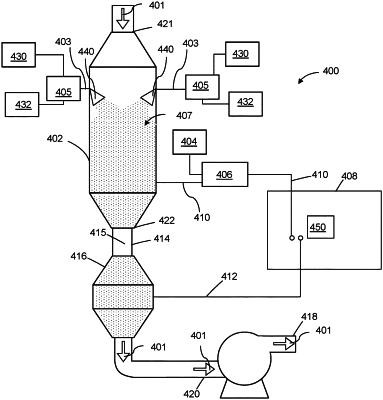| CPC F01N 11/00 (2013.01) [F01N 3/0222 (2013.01); F01N 2550/04 (2013.01)] | 20 Claims |

|
1. A method of increasing a filtration efficiency of a porous honeycomb filter comprised of a plugged honeycomb body comprising porous walls, an inlet end and an outlet end, the method comprising:
flowing an inlet flow of inorganic particles into the inlet end of the plugged honeycomb body;
counting an inlet number of a selected portion of the inorganic particles entering the plugged honeycomb body;
counting an exit number of a selected portion of the inorganic particles exiting the plugged honeycomb body in an outlet flow;
wherein inorganic particles which enter the plugged honeycomb body without exiting the plugged honeycomb body are deposited onto and/or into the porous walls of the honeycomb body, thereby increasing a filtration efficiency of the plugged honeycomb body as deposition continues;
determining a filtration efficiency of the plugged honeycomb body with the deposited particles based on the inlet number and the outlet number; and
terminating the flowing of the inlet flow of inorganic particles into the inlet end of the plugged honeycomb body based on the determined filtration efficiency.
|